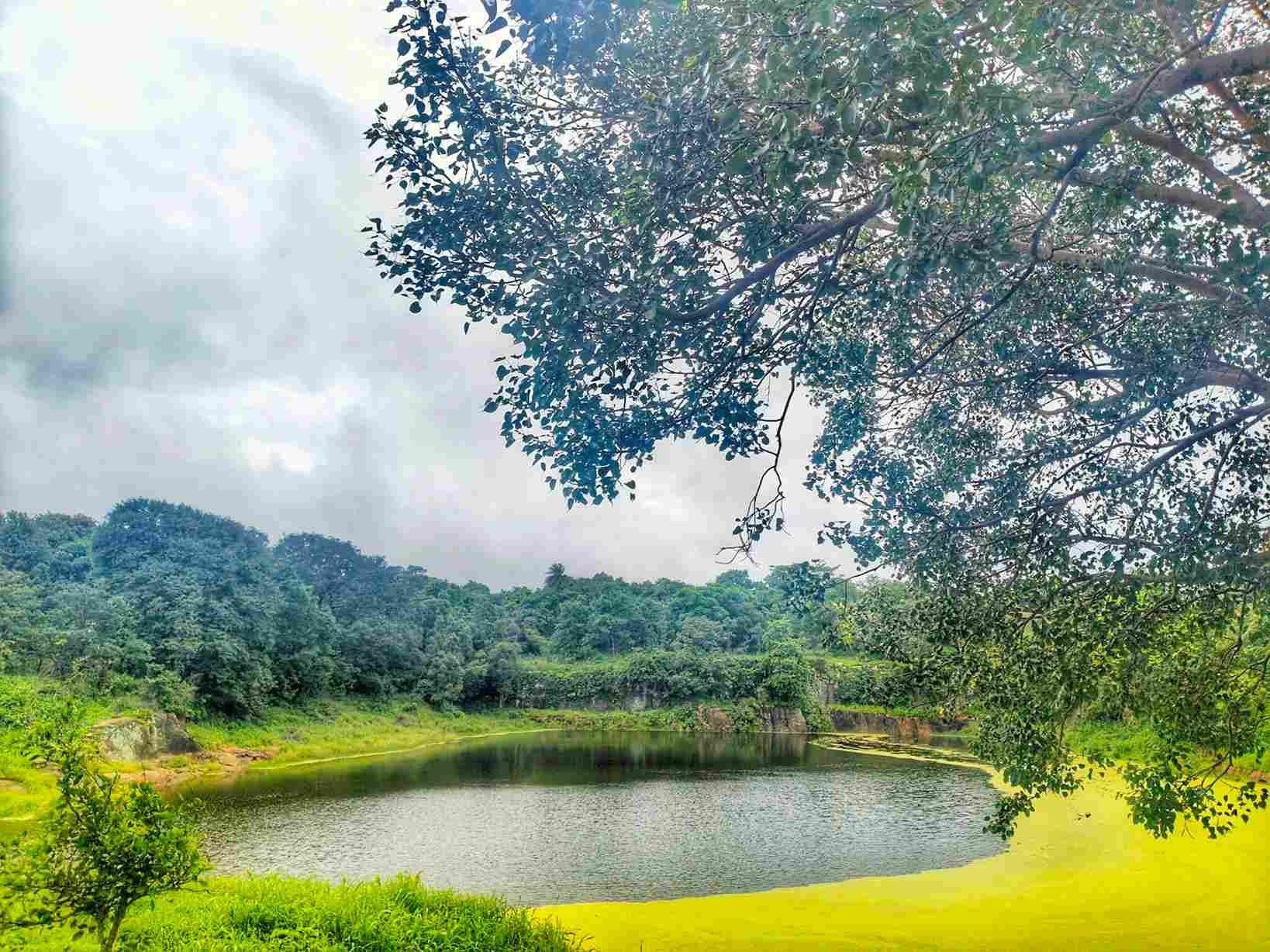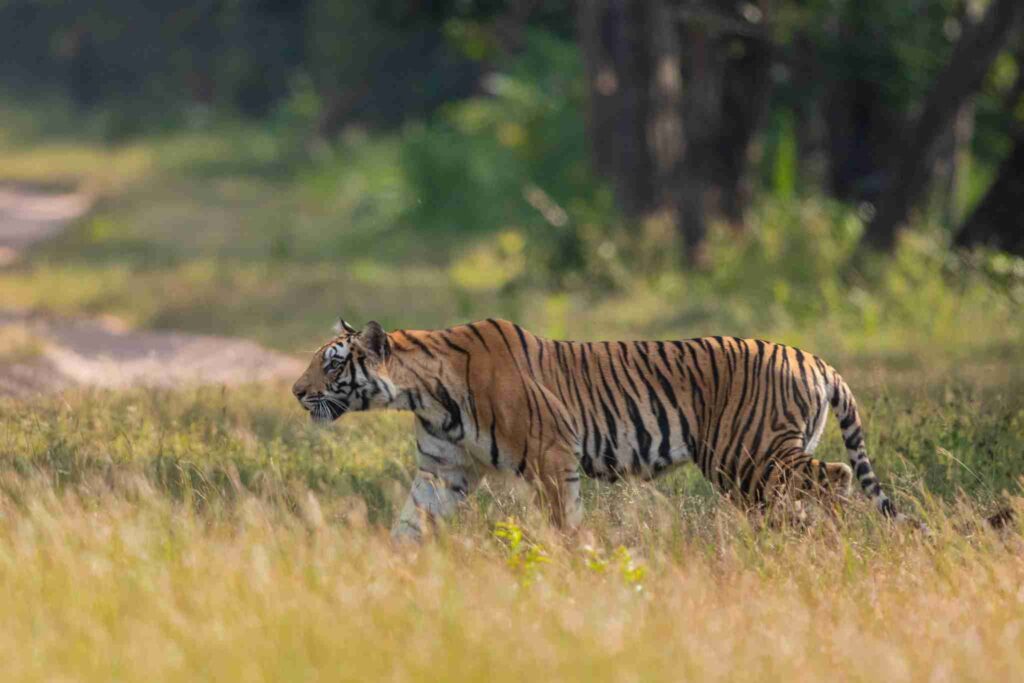Bandhavgarh, the land of origin of white tigers, is soaked in history in every way possible. With its diverse geology, mythology, and history, this landmass is an ode to one of the greatest species on the earth: the tiger. Known for its wildlife, Bandhavgarh hides many secrets, some of which are yet to be uncovered. While we cannot dig out the unearthed mysteries, this blog will take you on a historical journey of Bandhavgarh, from its origins to how it evolved into its current form.
BANDHAVGARH: THE LAND OF TIGERS & TALES
KEY HIGHLIGHTS
- The name Bandhavgarh has its origin in the Hindu mythological tale, Ramayana.
- Once a part of Gondwana land, it lost its ability to be used as agricultural land.
- It was once ruled as a hunting ground for tigers by the rulers of Rewa.
- Tansen, one of the Navratnas of Mughal King Akbar, was gifted by a Maharaja of Bandhavgarh.
- The first white tigress was spotted in 1918 and was hunted by Raja Gulab Singh, father of Marthand Singh.
- The forest was declared a national park in 1968.
Situated in the Umaria district of Madhya Pradesh, Bandhavgarh is one of the most renowned national parks in India. Known for its high density of tigers, this national park is an absolute beauty with lush green trees covering the entire stretch the of jungle. Surrounded by the village population on its periphery, the national park is a protected haven for wildlife.
Let’s uncover each aspect of this forest step by step.
MYTHOLOGY OF BANDHAVGARH
According to the legend, the name Bandhavgarh originated from the words, Bandhav and Garh. The word Bandhav means brother and Garh means fort in Hindi. Hence, the name Bandhavgarh came to the fore. It is believed that Lord Rama had gifted this fort to Lord Lakshman to keep an eye on the Lanka.
Meanwhile India Naturally by Bittu Sahgal & Anish Andheria quotes otherwise. It says that Lord Ram stopped here after vanquishing Ravana in Lanka. The book also quotes that it was Hanuman’s simian architects, who built the bridge to Lanka and also designed and constructed the Bandhavgarh Fort
People here still worship Lord Lakshman in a temple within the fort premises.
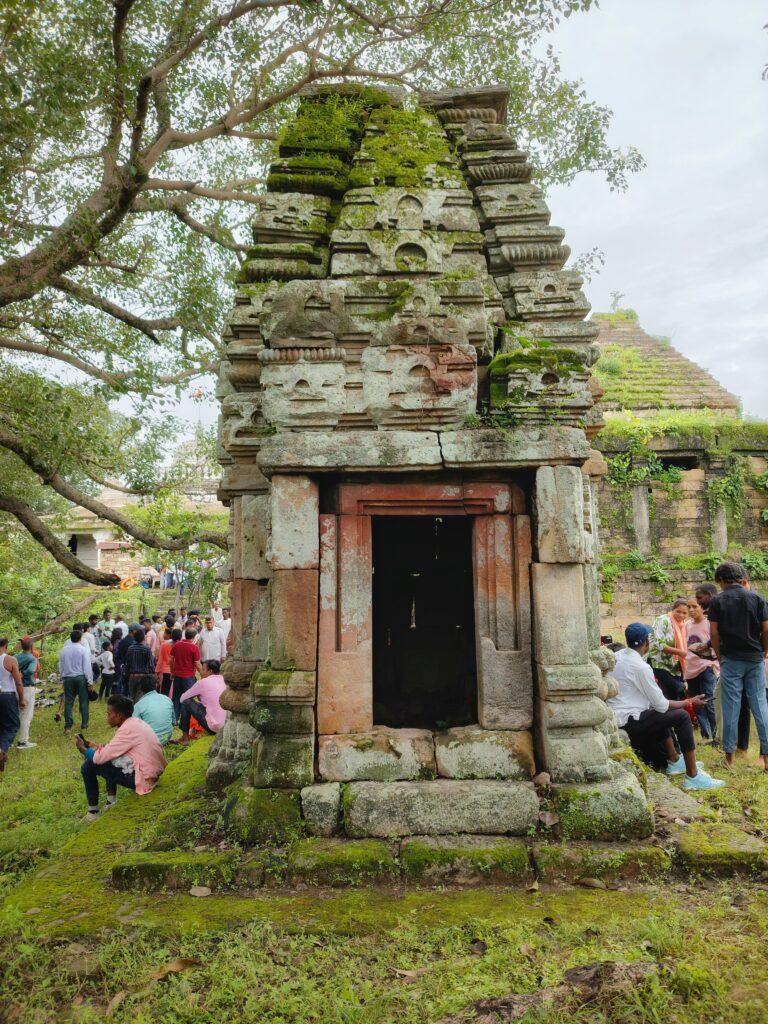
However, there are no such reports to confirm how old the fort is or who built it.
Also Read: Best Gates in Bandhavgarh
Bandhavgarh Fort
As mentioned earlier, the story of Bandhavgarh revolves around the fort. This 2000-year-old fort is situated at 800 m above sea level. The fort as mentioned earlier was gifted to Lord Lakshman by his elder brother Lord Rama. Lord Lakshmana thus got the title ‘Bandhavdheesh’ and was made lord of the fort after that.
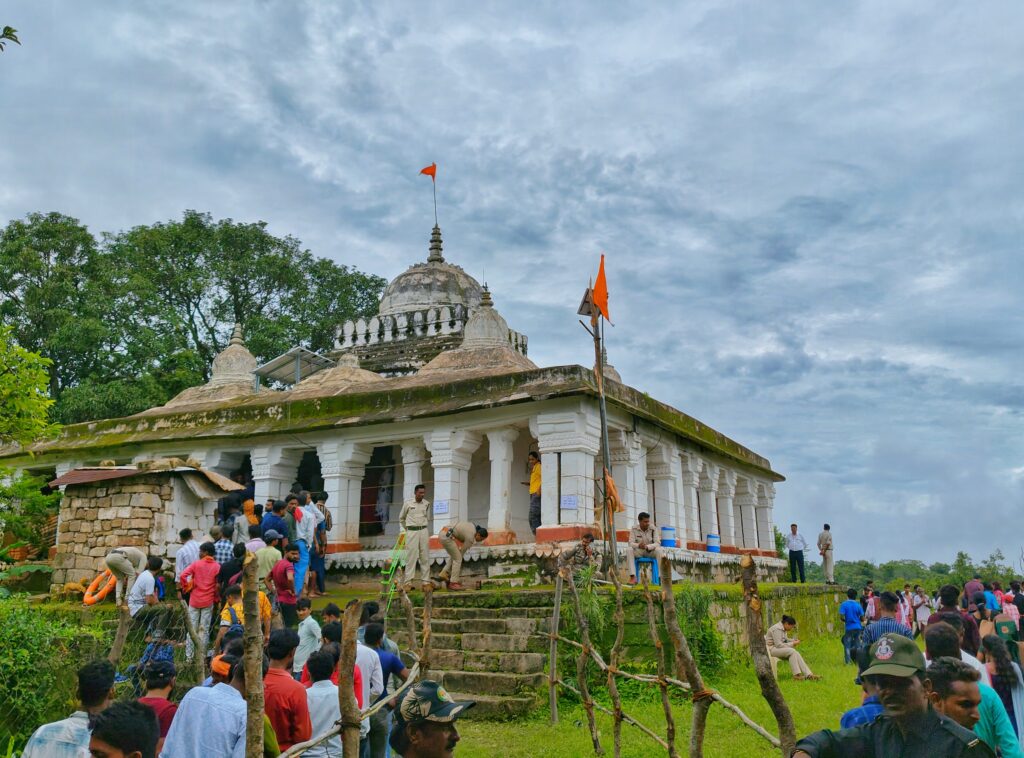
The fort is spread across more than 500 acres of land, with dense forest surrounding this historic marvel. The fort is adorned with Brahmi inscriptions. Some caves still have pugmarks and stripes depicting the importance of tigers. The premises of the fort have 10 statues representing each avatar of Lord Vishnu.
According to, Hindu mythology, Lord Vishnu has 10 avatars and is also known as Dashavatar. The fort also has a temple dedicated to lord Lakshmana.
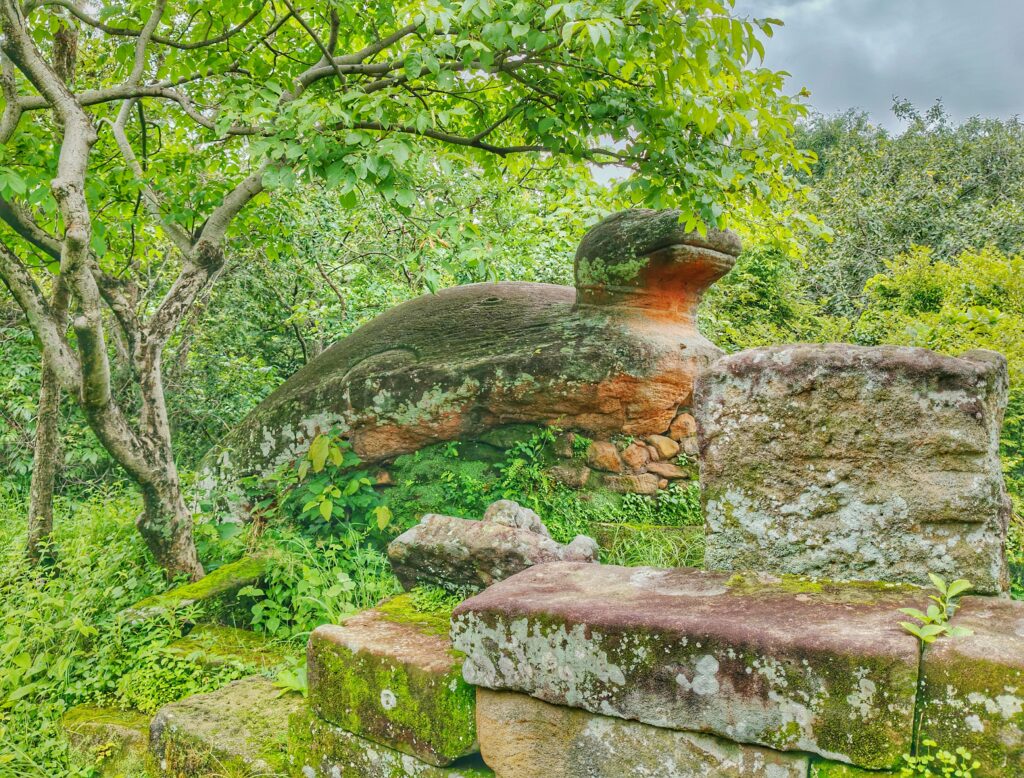
Tourists can reach the fort by trekking for about 5-6 km from the core zone Tala. But here’s a twist, the fort opens twice a year, in August and December. In August, the fort opens for Janmashtami and in December, it opens for Kabir Panth Sammelan. This makes visiting Bandhavgarh fort worthwhile.
From Maghas, Vakatakas, Chandelas and lastly to the Baghels, the fort has been the seat of power for many dynasties. The last of the rulers, the Baghels played a crucial part in the conservation of the forest. After a half-an-hour hike, a trail will take you to Shesh Shaiya, another marvel in the jungle.
The Outlook traveller quotes that the hilltop has three more 12th-century temples and some ruins of the palace of the royals of Baghels.
Also Read: Tigers of Bandhavgarh
The Legend of Shesh Shaiya
Shesh Shaiya is a 10th-century statue of Vishnu. This is a 35-foot-tall statue of Lord Vishnu. Here Lord Vishnu can be seen in resting position over a seven headed serpent named Sheshnaag, hence the name Shesh Shaiyaa came to fore. Shesh Shiya is the point of origin of the Charan Ganga River, the river which never dries, is the lifeline of the park and many large meadows.

India Naturally mentions that this water source was never disturbed despite hundreds of years of wars and other invasions.
ORIGIN & GEOLOGY OF BANDHAVGARH
The central part of India holds its origin in the southern part of the erstwhile continent Pangea. Not just central India but the entire subcontinent is originated from Gondwana land. Around 225 million years ago, this supercontinent Pangea began breaking up. At this time, it was divided into the northern part of Laurasia and the southern part of Gondwana land.
Gondwana land comprised present-day countries like India, South America, Africa, Madagascar and Australia.
Given its location, the central part of India bore the brunt of subsequent tectonic movements. These tectonic movements resulted in intense pressure building up from both the upper and the lower sides of the tectonic plates. Huge reservoirs of natural minerals in this region are a testimony to this fact.
The Bandhavgarh Inheritance by Bittu Sahgal mentions that the rugged topography and the hills are a prominent feature of Bandhavgarh. It also highlights how the forces of erosion turned Gondwana sandstone into sandy loams which are not suited for agriculture.
If you ever happen to visit Bandhavgarh, you will notice the entire stretch covered with sal and teak trees. But the land is mostly infertile for agricultural crops.
HISTORY OF BANDHAVGARH
Bandhavgarh is adorned with rich and colorful history but with hues of violence. The present-day national park was once a hunting ground for Maharajas of Bandhavgarh. The story of Bandhavgarh is mostly centered around its majestic fort located in the hilltop.
The Kings of Bandhavgarh
The transfer of the fort from one dynasty to the other shows how important the fort might have been for the rulers. As mentioned earlier, there are no reports to confirm who built it but the official history of the fort started from Bhimseni Satvat (300 AD).
The Bandhavgarh Inheritance by Bittu Sahgal mentions that the first possessors of the fort were Bharhivas Vakataka of the Vakataka dynasty. The Vakataks ruled the Deccan for more than two and a half centuries. The dynasty is also credited for building the famous Ajanta caves. The Vakatakas were Brahmin rulers who also preached Buddhism, this can be seen from the fact that the dynasty also constructed Buddhist viharas.
India Naturally quotes that north of the Bandhavgarh fort harbours Brahmi inscriptions dating back to the 1st century BC. In one such cave, Bagdhalak, one can see stripe patterns and pugmarks stone-etched by worshippers. This shows that this species has been walking on this land since time immemorial, the book quotes.
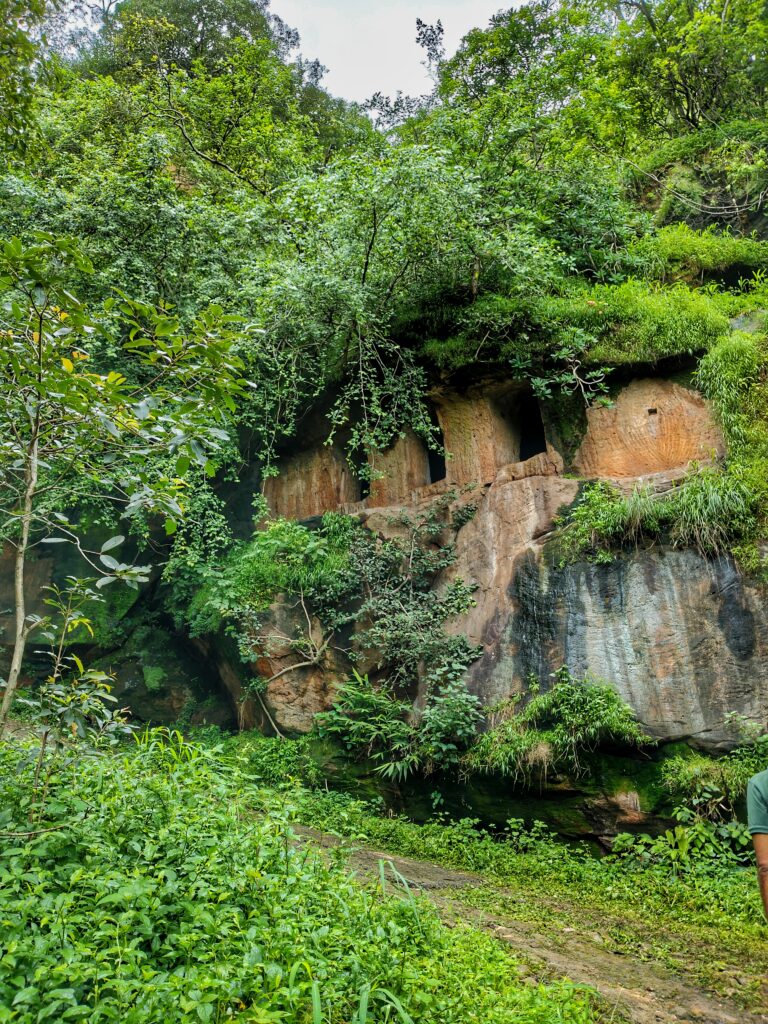
The book also says that the Chandela dynasty of Bundelkhand, known for building Khajuraho, frequently attacked the rulers of Bandhavgarh. However due to some reason, they were unable to confiscate the fort. Around the 12th century, then rulers Kalchuris gave this fort away to the Baghelas as a dowry when one of their daughters got married to a Baghel prince.
Also Read: All about Bandhavgarh
How are the Baghels connected to the Mughals?
The Bandhavgarh Inheritance mentions in the 16th century, Ramchandra Deo, a Baghel king, gifted the golden-voiced musician Tansen to the Mughal Emperor Akbar. Also, the Mughal miniatures which we see today were modelled on scenes witnessed by the Bandhavgarh. This shows the extent of camaraderie between the two dynasties.
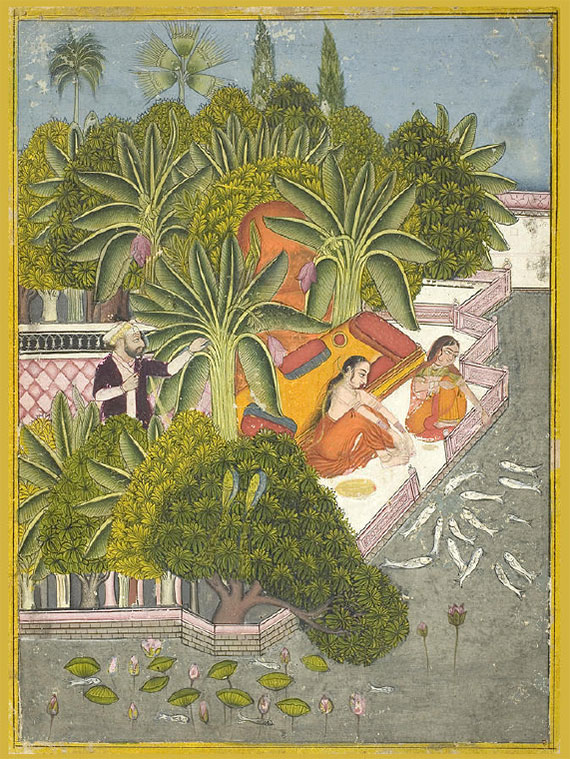
Eventually, the Baghel Kings who ruled the fort at that time, shifted their capital to Rewa. The land of Bandhavgarh was also used by the maharajas to hunt down tigers. Hunting was then a sport played by the royals.
Bandhavgarh and the story of the white tiger
The first white tiger was spotted by Maharaja Martand Singh in 1951. It is said that when Maharaja was out hunting, he spotted a white tiger. Instead of killing it, the maharaja captured it. The white tiger cub named Mohan was then held in captivity at the ruler’s summer palace.
PRESENT-DAY BANDHAVGARH
Maharaja Martand Singh played a crucial role in getting the jungle classified as a national park. The king convinced the then Prime Minister Indira Gandhi to declare the jungle as a national park, so that the tiger population could be conserved. It was in 1968 that the forest was declared a wildlife sanctuary. In 1968, the forest was declared a national park and tiger reserve.
The people of Bandhavgarh lead a normal but tough life and are heavily dependent on the forest. Before it became a national park, the villagers used to turn to the forests for their basic needs. But the situation has changed and these villagers now count on tourism as their main source of income.
Bandhavgarh is still a mystery and a lot remains to be explored. But one should always respect the laws of nature and some things should be left untold. Stay tuned to this space for more such blogs about Bandhavgarh and surrounding areas.
Conclusion
Bandhavgarh is a place where history, mythology, and wildlife intertwine to create a landscape unlike any other. From the ancient fort that holds tales of gods and kings, to the vibrant wildlife that calls the park home, especially the majestic tigers, this region offers a deep connection to India’s past and natural beauty. Every visit to Bandhavgarh is a chance to step into a world where ancient legends meet the wonders of the wild.
If you’re planning to visit, staying at a resort in Bandhavgarh like Kings Lodge allows you to fully immerse yourself in this extraordinary environment. Nestled in the wilderness, Kings Lodge offers a peaceful retreat while being close to all the key areas for exploring the park. It’s the perfect place to relax after a day of adventure, surrounded by the same nature and history that make Bandhavgarh so captivating.
Written by Richa Dhiryan

